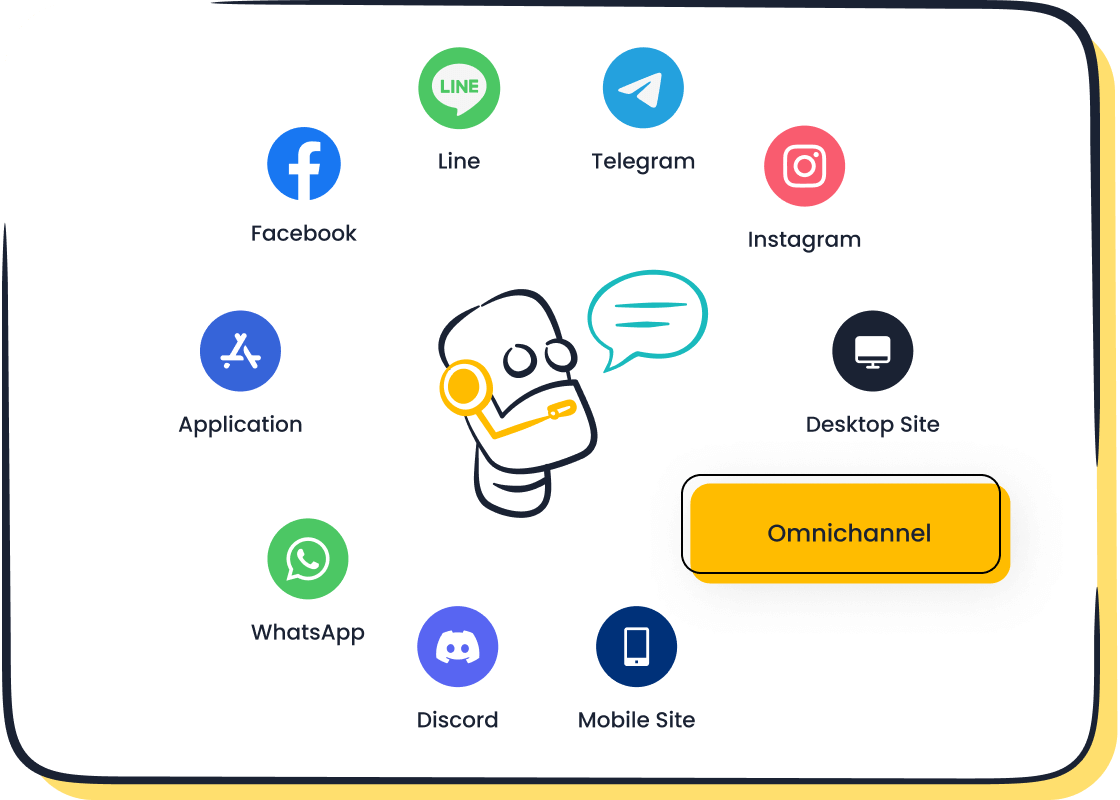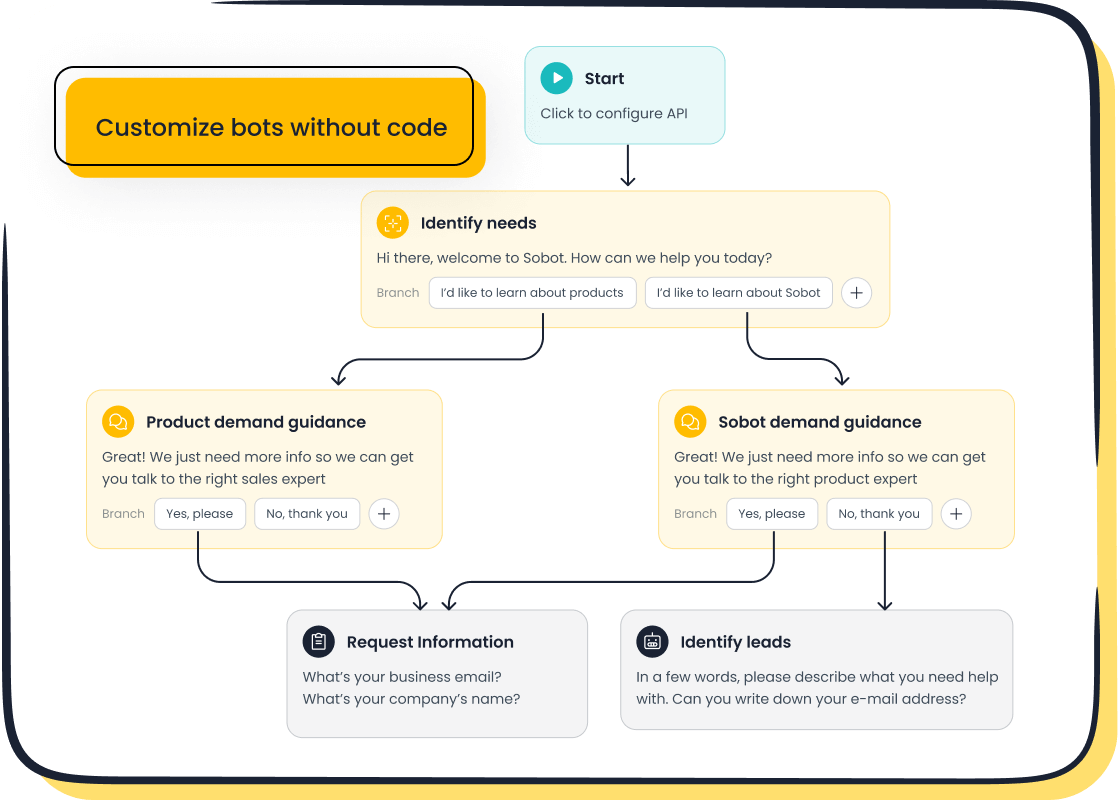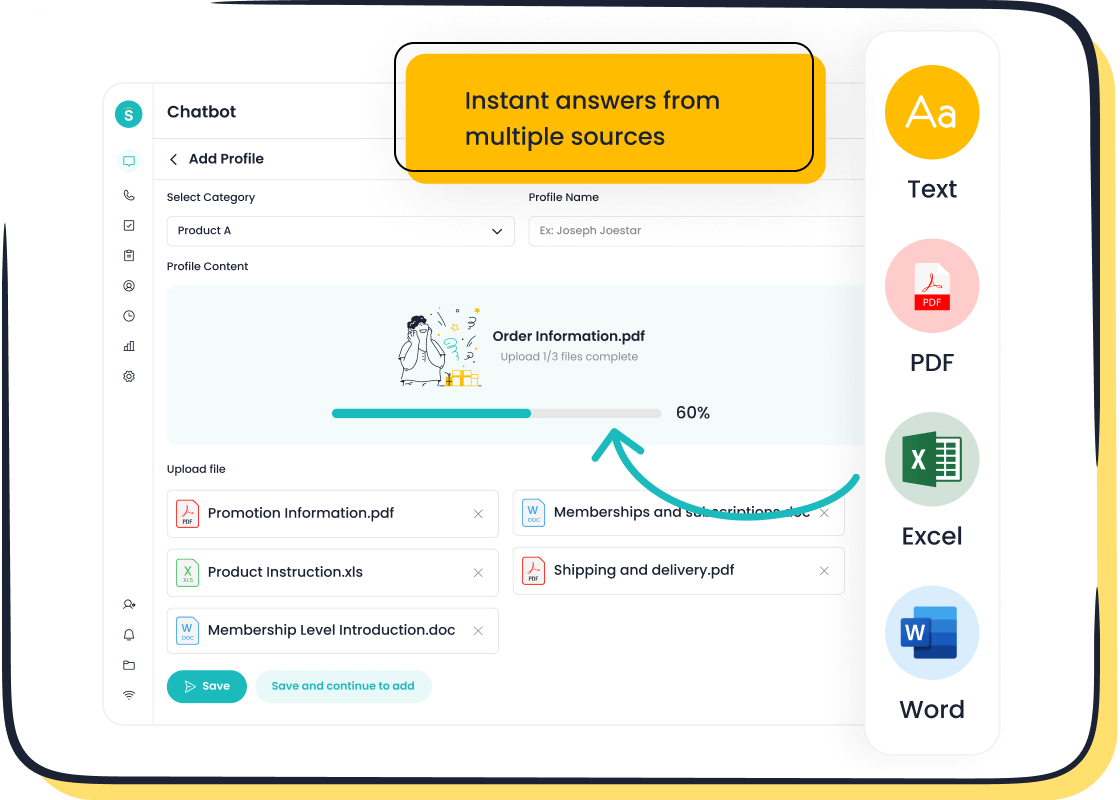Platform as a Service PaaS A Comprehensive Guide 2025

Platform as a Service (PaaS) has revolutionized cloud computing by offering a comprehensive framework for application development and deployment. It eliminates the complexities of managing infrastructure, allowing you to focus on innovation and coding. By 2025, PaaS adoption is expected to surge, with 66% of companies planning investments in integration platforms. This growth highlights its critical role in enhancing scalability, reducing costs, and fostering collaboration.
For businesses, PaaS drives efficiency in customer service. Tools like Sobot's AI Chatbot leverage PaaS to automate interactions, enabling 24/7 support and cutting operational costs. In application development, pre-configured environments accelerate project timelines, ensuring you stay competitive in a fast-paced market.
What is Platform as a Service (PaaS)?
Definition and Core Concept
Understanding the basics of PaaS
Platform as a Service (PaaS) is a cloud computing model that provides you with a complete environment for application development and deployment. It eliminates the need to manage complex infrastructure, allowing you to focus on building and running applications. PaaS includes essential components such as development tools, middleware, operating systems, databases, and infrastructure. These elements work together to create a seamless framework for developers.
- Development tools: Tools like source code editors and debuggers simplify coding.
- Middleware: Acts as a bridge between your applications and the operating system.
- Operating system: Offers pre-configured systems, so you don’t need to handle updates.
- Databases: Enables you to create and manage databases efficiently.
- Infrastructure: Manages servers and storage, freeing you to focus on innovation.
By using PaaS, you can streamline your development process and bring applications to market faster.
How PaaS supports application development

PaaS provides a robust foundation for application development. It offers pre-configured environments that reduce setup time and ensure consistency. You can access automation tools, hosting capabilities, and scalable resources, which allow you to focus on coding rather than infrastructure management. For example, Sobot’s AI Chatbot leverages PaaS to deliver intelligent customer service solutions. This approach not only accelerates development but also enhances the quality of applications.
PaaS in the Cloud Ecosystem
Role of PaaS in customer service and contact centers

PaaS plays a vital role in modern customer service by enabling businesses to build and deploy customer-centric applications. Contact centers benefit from PaaS by integrating tools that automate interactions and improve efficiency. For instance, Sobot’s omnichannel solutions, powered by PaaS, unify communication across platforms like WhatsApp and email. This integration helps you deliver seamless customer experiences while reducing operational costs.
Integration with tools like Sobot Chatbot
Tools like Sobot’s AI Chatbot exemplify how PaaS enhances customer interactions. The chatbot operates 24/7, automating routine queries and assisting agents. It uses a knowledge base to provide accurate responses and supports multiple languages. By leveraging PaaS, Sobot ensures scalability and reliability, making it easier for you to manage customer interactions effectively. This integration demonstrates how PaaS simplifies complex processes and drives innovation in customer service.
How Does Platform as a Service Work?
PaaS Architecture and Components
Cloud-based infrastructure and scalability
PaaS operates on a cloud-based environment, offering you the flexibility to scale resources as your application grows. This architecture eliminates the need for physical servers, allowing you to focus on development rather than infrastructure management. For example, PaaS platforms provide compute, storage, and networking capabilities that adapt to your application's demands. This scalability ensures that your applications remain responsive, even during peak usage. Businesses like Opay have leveraged PaaS to handle high volumes of customer interactions efficiently, showcasing its ability to support dynamic workloads.
| Component | Description |
|---|---|
| Infrastructure | Includes compute, storage, and network requirements of an application. |
| Hosting | Provides a hosting environment that abstracts servers, networking, and storage management. |
| Development tools | Tools and libraries for creating, testing, and launching applications, including IDEs and CI/CD. |
| Middleware | Software layer between the OS and deployed applications. |
| Operating systems (OS) | Manages infrastructure for stable and secure application development and execution. |
| Runtime environment | Provides facilities for applications built with specific programming languages to run smoothly. |
| Database management systems | Oversees read/write operations, maintenance, scaling, and backups of databases. |
| Security | Manages security protocols, allowing teams to focus on application development. |
| Application programming interfaces | Facilitates communication between applications and systems. |
| Application monitoring and BI tools | Provides performance metrics and enables data analysis and reporting. |
This table highlights the core components of a typical PaaS system, demonstrating how it simplifies the complexities of a cloud computing environment.
Middleware, runtime, and development tools
Middleware and runtime environments are essential for the functionality of PaaS. Middleware acts as a bridge between the operating system and your applications, enabling seamless communication and data management. It supports systems like database management and web servers, ensuring smooth operations. Runtime environments, on the other hand, provide the necessary infrastructure for applications built in specific programming languages to function properly. Together, these components allow you to focus on coding while the platform handles the underlying complexities. The development tools provided by PaaS, such as integrated development environments (IDEs) and CI/CD pipelines, further streamline your workflow, making application deployment faster and more efficient.
Service Delivery Models
Public, Private, and Hybrid PaaS
PaaS offers three primary service delivery models, each catering to different business needs:
- Public PaaS: Managed by cloud providers, this model offers flexibility and scalability. It is ideal for rapid application development without the need to manage infrastructure. Small and medium-sized businesses often prefer this model for its cost-effectiveness.
- Private PaaS: This model provides enhanced control and security, making it suitable for businesses with stringent data management requirements. It operates within a private cloud or on-premises infrastructure.
- Hybrid PaaS: Combining the best of both worlds, hybrid PaaS allows you to manage sensitive applications securely while leveraging public resources for scalability and cost efficiency.
| PaaS Model | Characteristics | Use Cases |
|---|---|---|
| Public PaaS | Managed by cloud providers, allows software deployment control, tied to public cloud. | Suitable for small and medium-sized businesses, but less favored by larger enterprises due to compliance issues. |
| Private PaaS | Offers agility of public PaaS with enhanced security and compliance, maintained on-premises. | Ideal for organizations needing strict data management and compliance, reducing cloud sprawl. |
| Hybrid PaaS | Combines public and private PaaS, providing flexibility and cost efficiency. | Best for companies wanting to leverage public resources while maintaining sensitive applications securely. |
This variety ensures that you can choose a model that aligns with your operational and security requirements.
Specialized PaaS for customer interaction
Specialized PaaS solutions focus on enhancing customer interactions. These platforms integrate tools like chatbots, ticketing systems, and omnichannel communication solutions. For instance, Sobot’s AI Chatbot, built on a PaaS framework, automates routine queries and supports multiple languages. It operates 24/7, ensuring consistent customer engagement while reducing operational costs. By leveraging such specialized PaaS solutions, you can improve customer satisfaction and streamline service delivery.
Key Features and Benefits of PaaS
Features of Platform as a Service
Pre-configured environments for application development
Platform as a Service provides pre-configured environments that simplify application development. These environments eliminate the need for manual setup, allowing you to focus on coding rather than infrastructure. With tools like integrated development environments (IDEs) and CI/CD pipelines, PaaS streamlines the entire development and deployment process. For example, PaaS platforms automate testing and resource allocation, enabling faster application releases. This efficiency is essential for businesses aiming to stay competitive in today’s fast-paced market.
PaaS also supports cloud databases, including NoSQL options, which enhance flexibility in managing data. By offering centralized database management and integrated development tools, PaaS ensures a seamless workflow for developers. These features make it a preferred choice for businesses looking to launch applications quickly and efficiently.
Scalability, flexibility, and built-in security
PaaS excels as a flexible and scalable cloud platform. It allows you to scale resources up or down based on demand, ensuring cost-effective operations without unnecessary infrastructure investments. This easy scalability is crucial for businesses experiencing fluctuating workloads. For instance, companies like Opay have leveraged PaaS to handle high volumes of customer interactions efficiently.
Enhanced security is another key feature of PaaS. It provides robust safeguards against potential threats, especially in hybrid cloud environments where compliance is critical. By offloading security responsibilities to the PaaS provider, you can focus on development while ensuring your applications remain secure. This combination of scalability, flexibility, and enhanced security makes PaaS an indispensable tool for modern businesses.
Benefits for Businesses
Faster application deployment and reduced costs
PaaS accelerates application deployment by providing a pre-configured development and deployment environment. This eliminates the need for manual setup, allowing developers to concentrate on building applications. Automated infrastructure management further reduces setup time, enabling faster releases. For example, PaaS platforms support CI/CD pipelines, which automate testing and deployment processes, ensuring continuous delivery.
Cost efficiency is another significant benefit. PaaS operates on a pay-as-you-go model, so you only pay for the resources you use. It also removes the need for large upfront investments in hardware and software licenses. By offloading maintenance and security responsibilities to the PaaS provider, you can reduce operational costs while maintaining high performance.
Enhancing customer service with tools like Sobot Chatbot

PaaS enhances customer service by enabling the integration of intelligent tools like Sobot’s AI Chatbot. Built on a PaaS framework, the chatbot automates routine queries, operates 24/7, and supports multiple languages. This improves efficiency and reduces costs by minimizing the need for additional agents. For example, Sobot’s chatbot boosts productivity by 70% and cuts expenses by up to 50%. It also enhances customer engagement through proactive messaging and real-time assistance.
By leveraging PaaS, businesses can deploy customer-centric applications that improve satisfaction and streamline service delivery. Tools like Sobot’s chatbot demonstrate how PaaS drives innovation in customer interactions, making it an essential component of modern customer service strategies.
PaaS vs SaaS vs IaaS: Understanding the Differences
Overview of Cloud Service Models
Definitions of SaaS, IaaS, and PaaS
Cloud computing models like SaaS, IaaS, and PaaS offer unique solutions tailored to different needs. Software as a Service (SaaS) provides ready-to-use software applications over the internet. It is ideal for end users who need quick access to tools like email or CRM systems. Infrastructure as a Service (IaaS) delivers virtualized computing resources, giving you full control over servers, storage, and networks. This model suits IT administrators and developers managing custom infrastructure. Platform as a Service (PaaS) bridges the gap by offering a complete environment for developing, running, and managing applications. It empowers developers to focus on coding without worrying about infrastructure.
| Feature | SaaS | PaaS | IaaS |
|---|---|---|---|
| Definition | Provides software applications over the Internet | Provides a platform for application development | Provides virtualized computing resources |
| User | End users | Developers | IT administrators and developers |
| Management | Fully managed by the provider | Shared between provider and customer | Mostly managed by the customer |
| Control Level | Low | Moderate | High |
| Cost Model | Subscription-based | Subscription or usage-based | Pay-as-you-go |
| Scalability | Highly scalable | Scalable, depending on application design | Highly scalable, user-configured |
| Customization | Limited | Moderate | Full |
Key differences in functionality and use cases
Each model serves distinct purposes. SaaS simplifies access to software, making it perfect for startups or businesses needing quick deployment. PaaS focuses on application development, offering tools and environments that streamline workflows for developers. IaaS provides maximum control, making it ideal for companies running legacy systems or requiring custom infrastructure. For example, Sobot’s AI Chatbot leverages PaaS to deliver intelligent customer service solutions, showcasing how PaaS supports innovation in customer-centric applications.
Choosing the Right Model
When to choose PaaS for customer service applications
PaaS is the best choice when you want to develop customer service applications without managing hardware or infrastructure. It provides pre-configured environments, enabling you to focus on creating tools like chatbots or ticketing systems. For instance, Sobot’s omnichannel solutions, built on a PaaS framework, unify communication across platforms like WhatsApp and email. This approach enhances customer interactions while reducing operational costs. If your goal is to streamline workflows and improve service delivery, PaaS offers the flexibility and scalability you need.
Examples of businesses leveraging PaaS
Many businesses have successfully adopted PaaS to drive innovation. SAP uses PaaS to provide an open business platform for application deployment. Salesforce combines SaaS and PaaS to offer flexible solutions for developers and end users. Similarly, Sobot’s AI Chatbot demonstrates how PaaS can enhance customer service by automating routine queries and supporting multiple languages. These examples highlight the versatility of PaaS in addressing diverse business needs.
Applications and Use Cases of PaaS
Application Development and Deployment
Streamlining development with PaaS
PaaS simplifies the application creation process by offering pre-configured environments that reduce setup time. You can access built-in tools that streamline development and testing, allowing you to focus on coding rather than infrastructure management. Automated infrastructure management ensures that resources scale on demand, making it easier to handle varying traffic loads. Collaboration tools enhance communication among teams, speeding up the application development and deployment process. For example, PaaS platforms support CI/CD pipelines, automating testing and deployment to ensure faster cycles and quicker debugging.
Supporting customer-centric applications

PaaS empowers you to create customer-centric applications that enhance user experiences. By providing scalable resources and integrated tools, it allows developers to build applications tailored to customer needs. For instance, Sobot’s AI Chatbot leverages PaaS to deliver intelligent customer service solutions. It operates 24/7, automates routine queries, and supports multiple languages, ensuring seamless interactions. This approach demonstrates how PaaS supports the development of applications that prioritize customer satisfaction.
Enhancing Customer Interactions
Using PaaS for chatbots and omnichannel solutions
PaaS enhances customer interactions by enabling the integration of chatbots and omnichannel solutions. It allows you to unify communication across platforms like phone, email, and social media, ensuring a consistent customer experience. AI-driven chatbots, such as Sobot’s AI Chatbot, resolve simple queries quickly, freeing agents to handle complex issues. This automation improves efficiency and builds trust by maintaining quality service across channels.
| Aspect | Description |
|---|---|
| Integration of Channels | PaaS enables seamless integration of communication channels like phone, email, chat, and social media, ensuring a unified customer experience. |
| Automation Tools | AI-driven chatbots enhance efficiency by quickly resolving simple queries, allowing human agents to focus on complex issues. |
| Consistency Across Channels | Training customer service teams to manage interactions across multiple touchpoints ensures quality service and builds customer trust. |
Case study: Sobot Chatbot in action

Opay, a financial service platform, implemented Sobot’s AI Chatbot to enhance customer service. By leveraging PaaS, Opay integrated the chatbot into its omnichannel system, enabling 24/7 support and automating routine queries. This solution improved customer satisfaction from 60% to 90% and reduced operational costs by 20%. The chatbot’s multilingual capabilities and proactive messaging further boosted engagement, showcasing the transformative impact of PaaS on customer interactions.
Integration and API Management
Simplifying third-party integrations
PaaS simplifies third-party integrations, making it easier for you to connect with external services like payment gateways and analytics tools. Developers can add new features to applications with minimal effort, ensuring a seamless user experience. PaaS also facilitates database connections, whether SQL or NoSQL, streamlining data management for your applications.
Managing APIs for seamless customer service
PaaS platforms provide tools and frameworks that simplify API management. You can design, build, and deploy APIs aligned with your business goals. For example, integrating APIs for social media or payment systems becomes straightforward, allowing you to enhance customer service. These capabilities ensure that your applications remain flexible and scalable, meeting the evolving needs of your users.
Challenges and Considerations for Adopting PaaS
Common Challenges
Vendor lock-in and data security concerns
When adopting PaaS, vendor lock-in often becomes a significant challenge. You may find yourself dependent on a specific provider’s infrastructure, which complicates migration to other services. This dependency limits flexibility and can increase costs over time. Security concerns also arise, especially when handling sensitive customer data. Ensuring your provider complies with industry standards is critical to avoid breaches. For example, encryption and identity management tools can help mitigate risks. By understanding these challenges, you can implement strategies to protect your data and maintain operational agility.
Tip: Choose widely supported programming languages and enable platform-specific security features to reduce vendor lock-in and enhance data protection.
Compatibility with existing systems
Integrating PaaS with your current systems can pose compatibility issues. Legacy systems may not align with modern PaaS frameworks, leading to inefficiencies. For instance, mismatched APIs or outdated software can hinder seamless communication between platforms. To address this, evaluate your existing infrastructure and ensure it supports PaaS adoption. Tools like Sobot’s omnichannel solutions demonstrate how integration can unify communication channels effectively, even in complex environments.
Key Considerations
Evaluating scalability and future needs
Scalability is a cornerstone of PaaS adoption. You need to assess whether the platform can handle growing workloads and adapt to future demands. Metrics like response time, uptime, and data I/O provide insights into performance. Implementing auto-scaling policies ensures your applications remain responsive during peak usage. For example, Sobot’s AI Chatbot leverages PaaS to scale resources dynamically, supporting millions of interactions daily. This scalability allows businesses to maintain high service levels without overinvesting in infrastructure.
Best Practice: Design stateless applications and configure autoscaling rules to optimize resource allocation.
Ensuring alignment with customer service goals
Aligning PaaS adoption with your customer service objectives ensures maximum impact. Start by defining clear goals, such as improving response times or reducing costs. Effective communication among stakeholders is essential for successful implementation. For instance, Sobot’s solutions integrate seamlessly with platforms like WhatsApp, enabling proactive customer engagement. This alignment helps you deliver consistent service while meeting operational targets.
Note: Establishing measurable goals and involving all stakeholders ensures your PaaS strategy supports long-term customer satisfaction.
How to Choose the Right PaaS Provider
Factors to Consider
Service reliability, uptime, and scalability
When selecting a PaaS provider, you need to evaluate their service reliability and uptime guarantees. A reliable provider ensures minimal downtime, which is critical for maintaining seamless operations. Look for providers offering uptime commitments of 99.9% or higher. Scalability is equally important. The best platform as a service provider should allow you to scale resources dynamically as your business grows. For instance, Sobot’s solutions, built on a robust PaaS framework, handle millions of interactions daily with 99.99% system stability. This level of reliability ensures uninterrupted service, even during peak usage.
Cost transparency and pricing models
Understanding the pricing structure of PaaS providers helps you avoid unexpected costs. Transparent pricing models, such as pay-as-you-go, allow you to pay only for the resources you use. This approach is ideal for businesses with fluctuating workloads. Compare the costs of integrated development tools, database management, and infrastructure offerings. Providers that offer clear documentation on pricing and no hidden fees are more trustworthy. For example, Sobot’s PaaS-based solutions provide cost-effective scalability, making them a smart choice for businesses aiming to optimize budgets.
Evaluating Providers
Comparing features and customer reviews
To find the right PaaS provider, assess their features and customer feedback. Look for platforms that support multiple programming languages, centralized database management, and robust security measures. Customer reviews on blogs, forums, and review sites can provide valuable insights. Focus on feedback from businesses with similar needs to yours. For example, Opay, a financial service platform, praised Sobot’s PaaS-powered solutions for improving customer satisfaction by 30%. Honest reviews like these help you gauge the provider’s reliability and performance.
Leveraging tools like Sobot for customer success
Tools like Sobot’s AI Chatbot demonstrate how PaaS can enhance customer success. The chatbot automates routine queries, operates 24/7, and supports multiple languages, improving efficiency by 70%. By integrating such tools, you can streamline customer interactions and reduce operational costs. Sobot’s solutions also offer omnichannel support, unifying communication across platforms like WhatsApp and email. This versatility showcases how leveraging the right PaaS provider can transform your customer service strategy.
Future Trends in the PaaS Market
Emerging Technologies
AI and machine learning in PaaS
PaaS platforms are evolving to support advanced technologies like AI and machine learning. These innovations allow you to integrate intelligent features into your applications without building them from scratch. For example, PaaS providers now offer tools that enable predictive analytics, natural language processing, and image recognition. This makes it easier for developers to create smarter applications that adapt to user behavior. Additionally, drag-and-drop interfaces simplify the development process, letting you focus on creativity rather than technical complexities. By leveraging these advancements, you can enhance your applications' functionality and user experience.
Serverless computing and automation
Serverless computing is reshaping PaaS by abstracting infrastructure management. This approach lets you concentrate on coding and deploying functions without worrying about servers. Key benefits include automatic scalability, cost efficiency through pay-per-use pricing, and the ability to handle unpredictable workloads. For instance, applications built on serverless PaaS platforms can adjust resources dynamically, ensuring optimal performance during peak usage. Automation further enhances this model by streamlining repetitive tasks, allowing you to focus on innovation. These features make serverless computing a game-changer in the PaaS landscape.
Market Growth and Innovations
Industry-specific PaaS solutions
Industry-specific PaaS solutions are gaining traction as they address unique sector demands. These platforms integrate specialized tools and pre-built templates, enabling you to focus on innovation while the infrastructure is securely managed. For example, VMware offers tailored PaaS solutions that improve operational efficiency and ROI. Such platforms foster collaboration among developers, making them ideal for industries like healthcare, finance, and retail. By adopting these solutions, you can streamline workflows and achieve better results.
Sustainability and green computing in PaaS
Sustainability is becoming a core focus in PaaS. These platforms promote resource efficiency and reduce waste, aligning with environmental goals like lowering carbon emissions. Transparent sustainability reporting ensures accountability and prevents greenwashing. Additionally, PaaS supports the circular economy by emphasizing access over ownership. By choosing sustainable PaaS solutions, you contribute to a greener future while optimizing your operations.
Platform as a service has become a cornerstone of modern business operations, offering agility, scalability, and innovation. By 2025, its role in streamlining application development and enhancing customer service will only grow. Businesses can leverage PaaS to automate workflows, reduce costs, and improve customer satisfaction. For instance, tools like Sobot’s AI Chatbot, built on a robust PaaS framework, enable 24/7 multilingual support and proactive engagement, driving efficiency and conversions.
PaaS empowers businesses to focus on growth and creativity rather than infrastructure management. It fosters innovation while ensuring seamless integration with existing systems.
To maximize these benefits, you should define clear goals, evaluate providers, and partner with experienced platforms like Sobot. With its proven reliability and customer-centric solutions, Sobot ensures your PaaS adoption aligns with your business objectives, setting you up for long-term success.
FAQ
What is Platform as a Service (PaaS) in simple terms?
PaaS is a cloud computing model that provides you with tools and environments to develop, test, and deploy applications. It eliminates the need to manage infrastructure, allowing you to focus on coding and innovation. For example, Sobot’s AI Chatbot uses PaaS to deliver intelligent customer service solutions.
How does PaaS improve customer service?
PaaS enables you to integrate tools like chatbots and omnichannel solutions into your customer service strategy. For instance, Sobot’s AI Chatbot operates 24/7, automates routine queries, and supports multiple languages, ensuring seamless customer interactions while reducing operational costs.
Can PaaS help reduce business costs?
Yes, PaaS operates on a pay-as-you-go model, so you only pay for the resources you use. It also eliminates the need for expensive hardware and software investments. Businesses like Opay have reduced costs by 20% using PaaS-based solutions like Sobot’s omnichannel platform.
What are the main benefits of using PaaS for application development?
PaaS provides pre-configured environments, scalable resources, and integrated tools that simplify development. It accelerates deployment and ensures consistency. For example, Sobot’s solutions leverage PaaS to handle millions of interactions daily, showcasing its scalability and reliability.
Are there any challenges in adopting PaaS?
You may face challenges like vendor lock-in and compatibility with existing systems. To overcome these, choose a provider offering flexibility and robust integration options. Sobot’s PaaS-based solutions demonstrate how seamless integration can unify communication channels effectively.
See Also
Best Cloud Contact Center Options to Consider in 2024
Leading Cloud Contact Center Services Reviewed for 2024
Enhance SaaS Customer Support Using Live Chat Techniques